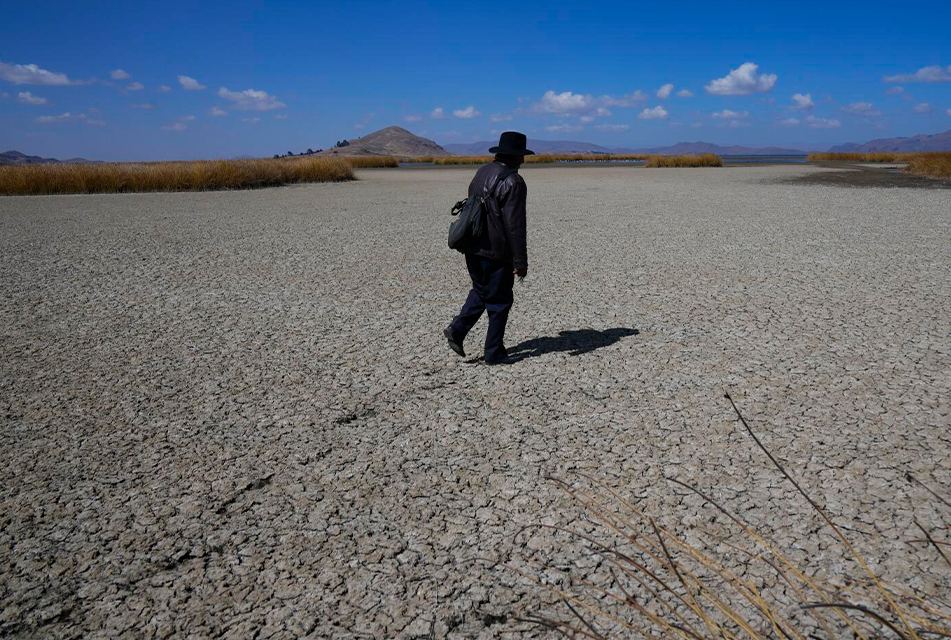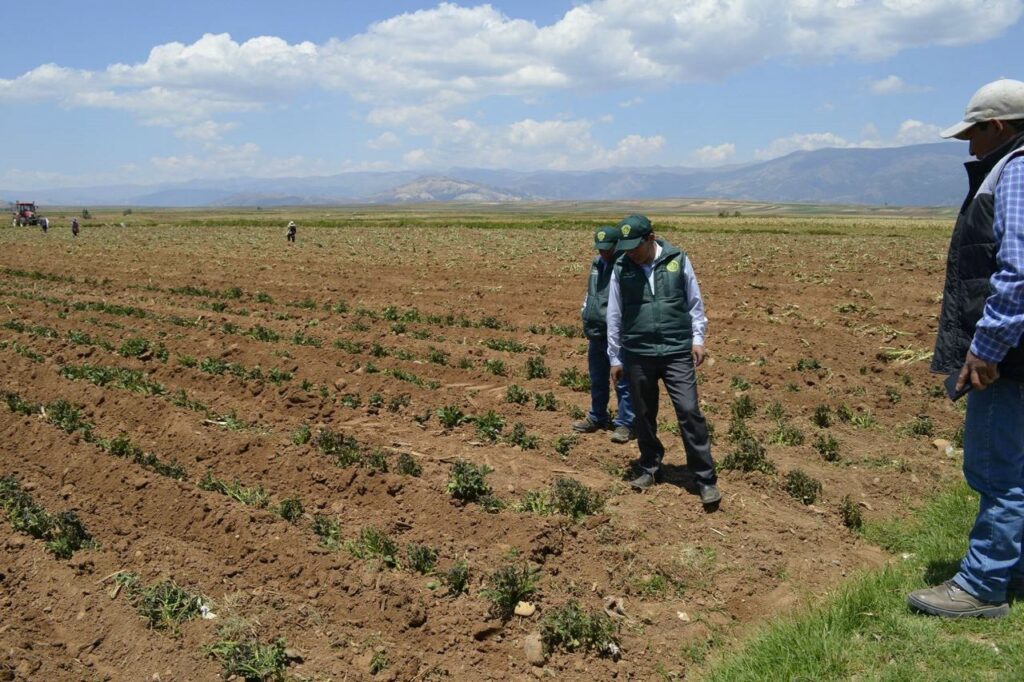
Coverphoto: Red de Comunicación Regional
Half of the Peruvian population is at risk of food shortage; a situation worsened by the water crisis caused by El Niño. This year, draught has caused the loss of thousands of hectares of crops, also affecting water supplies. As a consequence, the government declared a state of emergency in September in 544 districts, pertaining to 14 regions.
According to the Food and Agriculture Organization (FAO) of the United Nations, 50% of the inhabitants of Peru are experiencing food insecurity; one of the highest rates in Latin America. In 2022, the country recorded the highest number in South America, with 16.6 million people lacking nutritious food.
In this context, in recent months, the prices of certain staple products have increased by levels not seen in the last two decades. This is due to the strong rains and flooding in the coastal zones. For example, the price of limes increased by up to 500%. Climate volatility is also affecting labor activities. There are 8.5 million people at risk of not being able to carry out their economic activities due to the water deficit, warns the Sociedad de Comercio Exterior del Peru.
The delay in the seasonal rains in the Andes and Altiplano, which didn’t fall until the month of September, has caused havoc. In Puno, the region hardest bit by the draught, nearly 17,000 hectares of crops were lost. According to the Encuesta Nacional de Siembras, 9,000 hectares of Quinoa were also lost, which represents one fourth of the expected total amount of production. Of potatoes, a staple food in many parts of the country, 5,000 of the 60,000 hectares being cultivated were lost. Alpaca breeding for textiles and livestock are other sectors that have been affected by the draught in the southern Andean region.

Draught in Peru. Photo: Agencia Andina
“The period between 2022-2023 was critical. The rains didn’t come on time, and agricultural production was affected. We were forewarned about the situation; they are cyclical. Now the rains have arrived and according to our observations, they will only last for a short duration. This third harvest, at the end of November, will be better. The communities have techniques of water collection that the state doesn’t care to pay attention to. They believe that Western technology will resolve everything. The Ministry of Agriculture should consider our observations and techniques. There are catchment areas for water storage during draughts,” explained Rubén Apaza Añamuro, the spokesperson for the Consejo de Autoridades Originarias, Mallkus, Jilacatas y Mama Tallas de Puno, to Avispa Midia.
An undeniable effect of climate change in the Altiplano is the decreasing water levels in the emblematic Lake Titicaca. This year, the lake dropped by 80 centimeters due to high temperatures during the day, according to the National Meteorology and Hydrology Service of Peru. According to specialists, among the social implications of the decrease in water levels is the potential migratory exodus of the population of Puno.
Extractivist Industries Use Excessive Water and Pollute Headwater Basins
Water use in Peru is monopolized by agroindustry. The National Water Authority of Peru states that this sector uses 87.7% of the liquid, while 9.9% is destined for the population. The mining industry uses 1.5%, yet its impact is amplified due to the damage caused to the headwater basins. In Peru, 38% of extractivist projects are located in Indigenous and campesino territories, and 56% are in areas more than 3000 meters above sea level, where the rivers are born.
“Agroindustry is concentrated on the north coast, and mining activities are principally in the Andes. They attack the watersheds. The state doesn’t care if they contaminate the grass for livestock production. The rivers look yellowish due to the oxide residues, and this is then transmitted to the pastures, then to the dairy products. In consequence, this affects the entire country. As communities, we emphasize that we must specifically avoid the contamination of the headwater basins,” added Apaza, Indigenous authority of the Puno Province of Huancané.
In September, the Special Rapporteur on the Human Right to Safe Drinking Water and Sanitation, Pedro Arrojo, stressed that the destruction of aquifers, wetlands, and rainforests is principally due to mining. The report signals that the consequences are devastating: 31% of the population of Peru (more than 10 million people, 84% of which are minors), face daily risks of contamination from heavy metals and other toxins.
As a conservation alternative, the Sociedad Peruana de Alpacas Registradas proposed the creation of an autonomous organization to protect the Andean and Altiplano wetlands. “We want to emphasize that these wetlands are the source of small rivers that eventually connect to large rivers that flow into Lake Titicaca,” says a representative of the organization. According to the National Institute for Research on Glaciers and Mountain Ecosystems, Puno, Cusco, and Arequipa are home to more than 50% of Peru’s wetlands,
With the lack of rain and the drilling of wells for mining, these types of high Andean wetlands have been drying up, which adds to the increasingly frequent draughts and the decrease in water supplies.

Photo: Red de Comunicación Regional
“There are experiences to prevent ecocides. There are countries that have been devastated. This system of production isn’t interested in people, in living beings. We are acting from Mother Earth to insure our activities. We openly confront the neoliberal extractivist model that considers natural resources to be means to enrich oneself. We consider nature and Mother Earth to be alive. The elites promote genetically modified seeds, but they do not think about coexistence. As Indigenous authorities, as Indigenous and campesino peoples, we are insuring that our ways of life and production are in harmony,” said Apaza.
In recent weeks the situation has forced the rationing of water distribution in more than half of the 25 regions, among them in Lima. Ten percent of Peruvians do not have access to drinking water and are forced to pay a higher price. One fourth of the 25 departments of the country are receiving less than 12 hours of water service daily.
In this context of water scarcity and climate crisis, there are government voices suggesting the privatization of water in Lima. For the Ministry of Housing, Hania Pérez de Cuéllar, it is necessary to “analyze whether restructuring or privatization is better.”
The private management of water failed in the only region where it has been applied, in Tumbes, which now has the lowest access indicator, with only seven daily hours. Now, the water supply in the capital, Lima, the second largest desert city in the world, as well as throughout Peru, is being included in the privatization debate, opened up by groups of power aligned with the Dina Boluarte regime.


